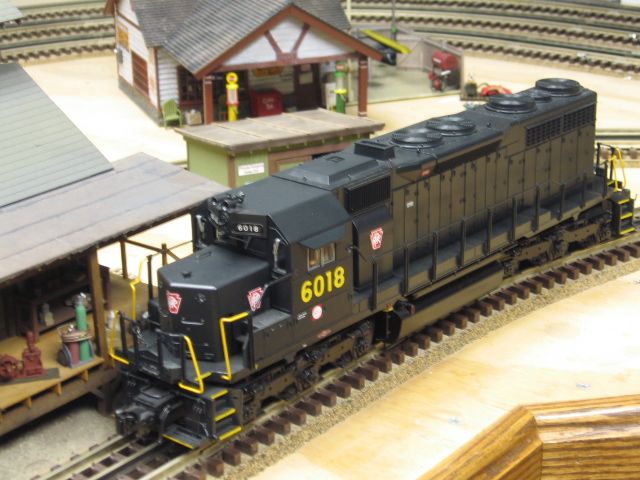Tried to install cc m to my Lionel 2001 NYC FT.Installation followed serial in connected to pin 24.Starts up in conventional w/o any control
Replies sorted oldest to newest
ERR has always recommended using an R2LC08 with any of their cruise control boards.
I have several older Atlas models with early modular board, including pre- R2LC 08 boards. I used an R2LC 08 to restore life to one of my Atlas SD35's Noted difference was marker lights had to be rewired. There may be other differences, these models were non-speed control.

Swap it out for the C08 version. I've had success with the C07 version and the CC-M, but not the C06 version.
Thanks to all.Ordered 08 board
Tried R2LC 08 receiver board.Engine lights come on when power applied.When I address engine I’d sounds come on but when I touch throttle on my Tmcc 1 handles goes takes off full speed.I even removed rs3 sound board but engine responded the same.
Thanks Nycfan
Check your antenna connection. Make sure it is not grounded anywhere.
You did, of course, program the engine type, right? If you didn't do that, that's the expected behavior. Assuming you did properly program the engine type with the new R2LC-08 board, read on...
Since it reacts after you crack the throttle, top suspect is the serial data link. If you are SURE you have a good connection from pin-24 of the R2LC to pin-1 of the 10-pin connector on the CC-M, you may need a little serial data "boost". Depending on the other stuff installed, sometimes the serial data isn't up to the task of feeding all the serial data connections, so I started making these to solve that problem.
Attachments
I have a serial buffer from err will that do?Yes I programmed the Ft to I’d 1 and aux1 6
Thanks Nycfan
I think that may or may not do it. I used to recommend that design, but that emitter follower design doesn't address one of the major issues with the serial data, that of amplitude. When I still had issues with serial data with that design, I bit the bullet and did some research to build the "end all" serial data buffer that boosts the amplitude to full rail-to-rail levels. I have never had an issue with serial data with my current design.
what pin on soundboard(RS 3) does the yellow wire go
Serial data, but I don't know where that might be without seeing what sound board and/or motherboard you have.
R2LCc06 is for the early culvert accessories. If you have no luck in finding the problem, the radio board may have damaged the motor drive board.
The sound board is RS 3.0 with separate power board for it that plugs into the mother board along with the R2lc board
The mother board is 691-pcb1-075
Chuck, it's very unlikely the R2LC-06 would damage the motor driver, the interface to the motor driver is exactly the same as for all other versions of the board, two PWM logic outputs and 5V from the R2LC. I'm very hard pressed to see how that damages the CC-M. Not working with it, yes, but damaging it, no.
I've run the R2LC-06 in my test set a number of times, and it works just like any other version driving the DCDR.
Well, I said if no other problems are found, that could possibly be an issue.
OK, but that's way down my list.
The symptoms suggest serial data issue, I've seen it many times. I've probably used at least 20 of the serial buffers to fix similar issues, and other people have bought them for the same reason.
How difficult is your serial buffer to install on my engine and what is the cost.
Thanks Nycfan
It's simple to wire it in, it just buffers the serial data that you're feeding the CC-M. Drop me an email if you want one of these.
Improved R2LC/R4LC Serial Port Buffer
When you look at the buffer diagram below, the +5V, INP, and GND all come from the R2LC, I just solder to the pins on the motherboard below the R2LC or on the back of the motherboard. The Out is the buffered serial data that goes to pin-1 of J4 on the CC-M.

Will email you later in week thanks Nycfan
Note that this should certainly cure any serial data issues to the CC-M, however if there's a different issue at work here, that may be different. Your symptoms scream out serial data, and that's by far the most common cause for a runaway when you crack the throttle for ERR cruise.






